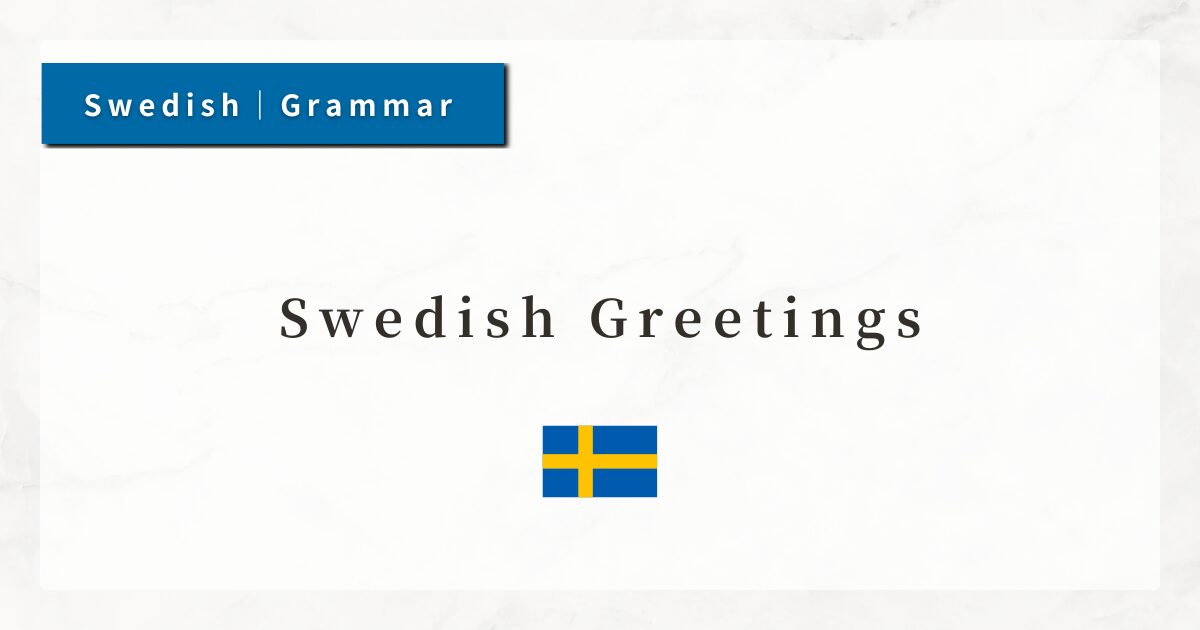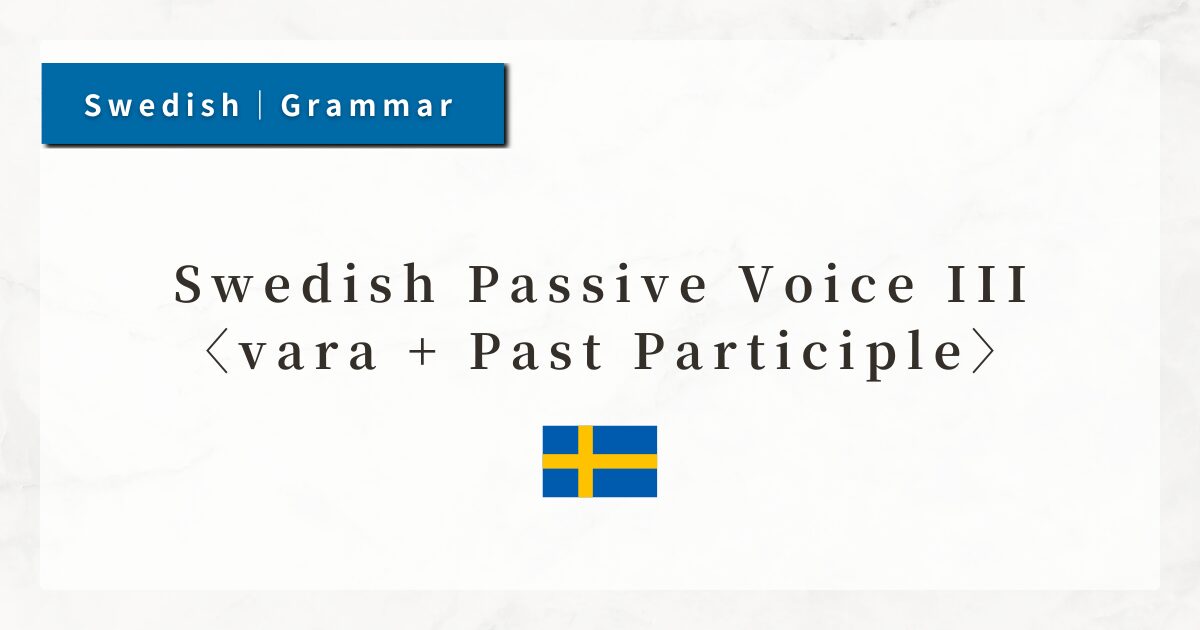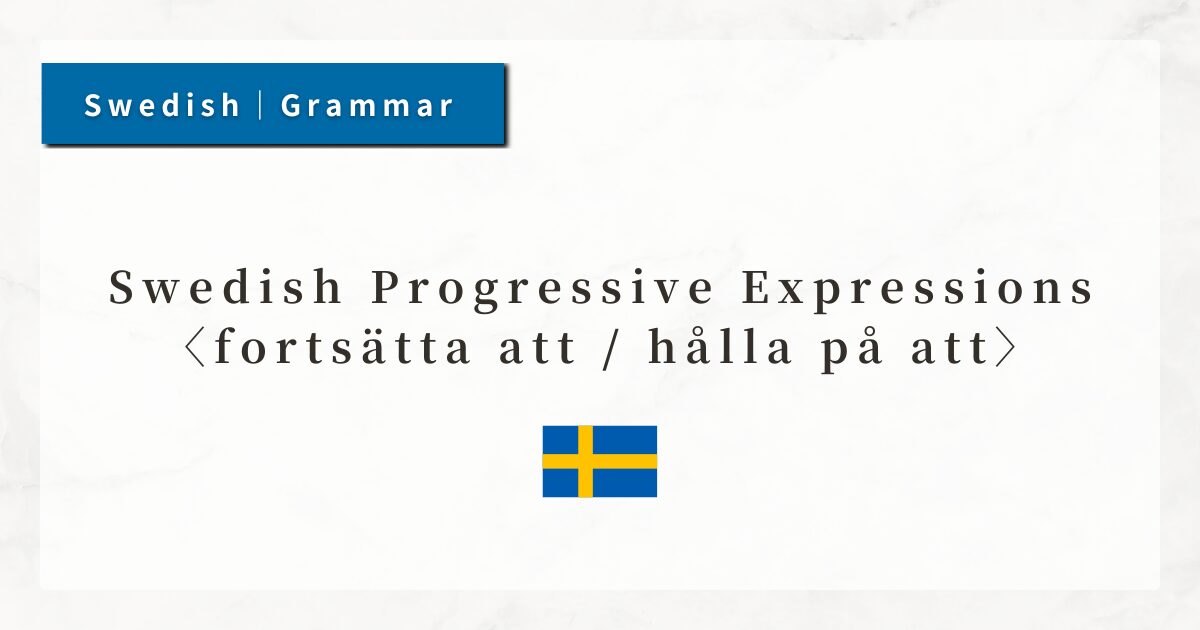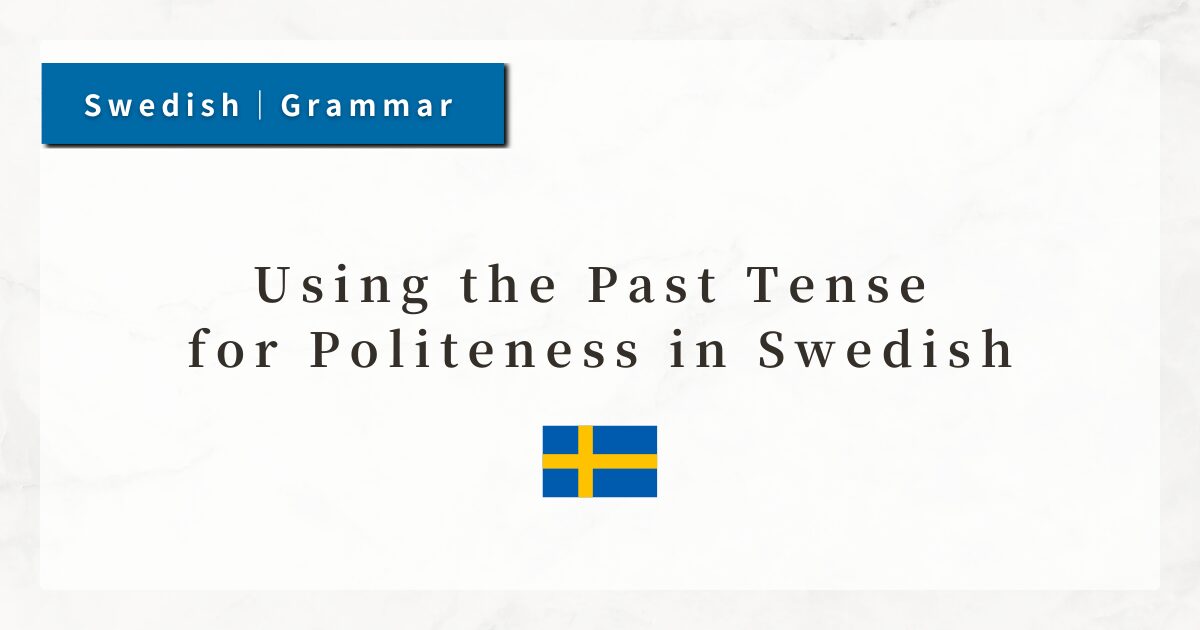#8 How to Form Yes/No Questions in Swedish|Word Order Rules and Examples
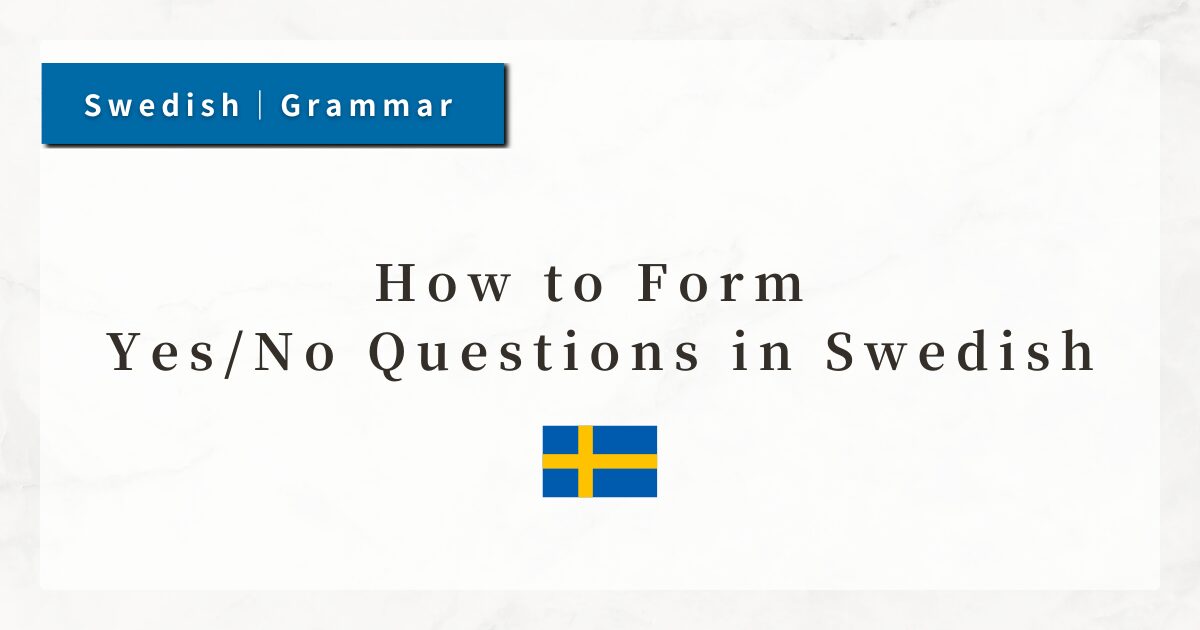
In Swedish, forming Yes / No questions that can be answered with “yes” or “no”—is quite simple.
All I need to do is change the word order to create a question. Because the structure is very similar to English, learners familiar with English will find this easy to understand.
In this lesson, I explain how to form Yes / No questions in Swedish, the rules of word order, how to answer, and some commonly used examples.
1. The Basic Rule: VSO Word Order
To form a Yes / No question in Swedish, the verb must be placed at the beginning of the sentence. This is known as VSO word order: Verb (V) + Subject (S) + Object/Complement (O).
Once I remember this structure, converting a statement into a question becomes very simple. Let’s compare:
- Statement (SVO):
Du bor i Sverige.
(You live in Sweden.) - Question (VSO):
Bor du i Sverige?
(Do you live in Sweden?)
→ I only move the verb bor (live) to the front to create the question.
In English: “You live in Sweden.” → “Do you live in Sweden?” The difference is that Swedish does not use an auxiliary verb like do. Word order alone is enough.
2. Checking Word Order Through Examples
Let’s compare affirmative sentences with their corresponding questions:
| Statement | Question | Translation |
|---|---|---|
| Du är trött. | Är du trött? | Are you tired? |
| Han bor i Uppsala. | Bor han i Uppsala? | Does he live in Uppsala? |
| Ni talar svenska. | Talar ni svenska? | Do you speak Swedish? |
| De jobbar på kontoret. | Jobbar de på kontoret? | Do they work at the office? |
Notice how each question follows the Verb → Subject order.
Yes / No questions in Swedish generally use the VSO pattern, with few exceptions, making it beginner-friendly.
3. How to Answer: Ja (Yes) / Nej (No)
After learning how to ask Yes / No questions, the next step is knowing how to answer. In Swedish, the answers are straightforward:
| Expression | Meaning |
|---|---|
| Ja (ya) | Yes |
| Nej (ney) | No |
After saying Ja or Nej, it is common to continue with a full sentence in the form Subject + Verb.
Example:
- Bor du i Sverige? (Do you live in Sweden?)
→ Ja, jag bor i Sverige. (Yes, I live in Sweden.)
→ Nej, jag bor inte i Sverige. (No, I do not live in Sweden.)
When making a negative response, the negation inte (not) is placed immediately after the verb. (I will explain this in detail in the next lesson.)
4. Grammar Notes and Common Mistakes
Although Swedish Yes / No questions are simple, meaning is not conveyed correctly unless the word order is followed.
Below is a list of common mistakes:
| Incorrect | Correct | Explanation |
|---|---|---|
| × Du är trött? | ◯ Är du trött? | The verb är must come first in a question. |
| × Ni talar svenska? | ◯ Talar ni svenska? | The verb must come before the subject. |
| × Är trött du? | ◯ Är du trött? | The subject (du) must follow the verb directly. |
The basic rule is Verb → Subject → Remaining information. Keeping this sequence in mind is essential.
5. Summary
- Swedish Yes / No questions are formed with VSO word order (Verb first).
- No auxiliary verbs are needed—only word order changes.
- Answers use Ja (yes) or Nej (no), often followed by “Subject + Verb.”
- Pay attention to word order to avoid mistakes.
- Practice regularly to master this everyday sentence structure.

